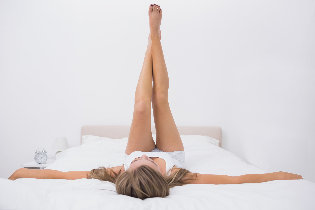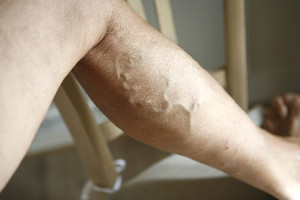
Treatment of any disease is accompanied by the patient's search for answers to questions related to lifestyle, nutrition, medication. The success of all therapies depends on it.
To get rid of a common disease like pathological varicose veins, you need to know what you can and cannot do with varicose veins. Some restrictions will allow the patient to recover quickly from the pathology and rule out relapse.
Basic methods of treatment of varicose veins
After visiting a phlebologist, the patient will be given a number of recommendations for treatment.
The following medications may be prescribed:
- Venotonic and angioprotective substances;
- Ointments and gels - used as a complex treatment to get rid of mild manifestations in the form of spider veins;
- Steroid anti-inflammatory drugs, external dosage forms based on them, are needed to treat advanced varicose veins;
- NSAIDs - reduce pain and eliminate inflammation in phlebitis;
- Drugs that prevent blood clots and dissolve existing blood clots are prescribed for venous thrombosis.
Unfortunately, medications are not always enough. In advanced stages, the doctor may suggest considering surgical treatment options. Removal of the affected vessel is one of the types of surgery. This difficult operation is sometimes the only way to get rid of the pathology. Minimally invasive methods include sclerotherapy and laser exposure to blood vessels.
Because of the increase in the diameter of the varicose veins, mechanical compression significantly improves the well-being of patients. All patients should wear compression stockings. It is selected by a doctor based on the stage of the disease. In addition, your doctor may recommend exercise therapy, massage, and physiotherapy procedures.
What can you do at home?

Varicose veins are often accompanied by swelling and pain in the legs in the evening. You can get rid of the symptoms quickly. You should lie on your back and raise your legs above body level (you can lean on the edge of a chair or sofa). You should be in this position for at least 20 minutes. If varicose veins are detected and suspected, you should exercise daily.
To improve blood flow, you can do a 1-minute, 3-set "bike" lying on your back. To activate the work of the calf muscles, the veins of the feet will allow you to walk on the toes. This allows you to rotate from the heel to your toes.
Other exercises for varicose veins:
- bending fingers and arms at the same time
- leg bending / stretching,
- Stop turning,
- squat,
- alternative knee lifts to the body,
- Walking on the outer and inner surfaces of the feet.
Walk daily to lose weight without damaging your arteries. The distance should be gradually increased. It is better to start with a short distance, which will take a maximum of 15 minutes at a slow speed. You need comfortable shoes, water and compression garments to walk on. You should not be dehydrated, so take a small glass of water.
It's important to remember that walking without an anti-varicose form can make the disease worse. Sportswear and footwear should not impede movement, and should not be rubbed on the skin with rubber bands.
If you have a treadmill at home, you can set a distance of 1 km at a speed of 5 km / h without inclination. It is best not to increase the load during the first week. When you are confident in your abilities, you need to extend the distance a bit.
Traditional methods of treatment of varicose veins
Traditional medicine can be used to treat varicose veins. These are safer than medications, but still require prior discussion with your doctor.
- Rinse the Kalanchoe leaves, chop and pour into a 500 ml glass jar. Half a jar or bottle should be filled. The remaining space should be filled with vodka. Remove the infusion in a dark place for 1 week. Shake the solution periodically. After a week, you can use a healing infusion to wipe the affected areas with varicose veins.
- 50 g of horse chestnut flowers should be poured with 500 ml of vodka and infused for 2 weeks. As a result, the solution should be taken 30 drops 3 times a day before meals. The course of treatment is 1 month.
- Squeeze the juice from fresh potatoes, moisten a bandage of natural fibers with it, apply a bandage to varicose veins at night.
- Compressors for whey at night.
- Pour white acacia flowers into a glass, fill it to the brim with vodka, insist. The solution should be used to treat swollen varicose veins.
- In the same way, an infusion is prepared from birch buds. Saturation of the solution with nutrients will take 10 days.
- Foot ointment: Take 10 grams of crushed chamomile flowers, the same amount of sage leaves, 50 g of chestnuts (grind in advance), 5 g of ordinary starch. Mix everything, add 200 grams of heated chicken oil. The resulting mass should be heated in a water bath for 2. 5 hours. After that, everything should cool and infuse overnight. The ointment can be used several times a day to defeat varicose veins for a long time.
It is important to remember that traditional treatments only work in conjunction with traditional medicine. Lifestyle changes and weight loss may be required.
What is forbidden for varicose veins?

There are a number of limitations associated with a particular disease. First, you need to avoid heavy lifting. This also applies to those who want to do sports related to power loads. In this case, the situation may worsen.
Girls with varicose veins cannot use the following types of cosmetic procedures:
- sugaring, epilation with hot wax;
- enzymatic and quantum types of epilation;
- to pluck hairs with tweezers;
- Warm coats in the SPA, it is better to replace them with hydromassage or cold type dressings;
- Tattooing in the area of the affected veins.
Women should not have an abortion because varicose veins can be found anywhere on the body, including the small pelvis. This can be dangerous due to the high risk of bleeding.
If varicose veins are treated at home, you should exclude procedures related to warming of the extremities: hot compresses, baths. One rub with tinctures, it is better to use a contrasting shower.
Those who watch their physical condition will have to give up some exercises: jumping rope, squat with a load, long running, aerobics, shaping, cycling, dancing. Walking and swimming are useful.
Cosmetic massage can also be harmful for varicose veins. During the procedure, it is possible to redistribute blood flow to other vessels and involve them in the pathological process. Therefore, massage courses should be conducted in a medical institution only after medical appointments.
Diet for varicose veins includes animal fat, spicy and salty foods, vinegar, large amounts of coffee. Based on your anthropometric data, you should follow a rationally balanced diet that you can choose with a nutritionist.























